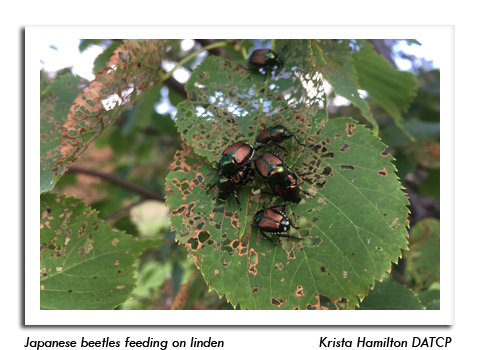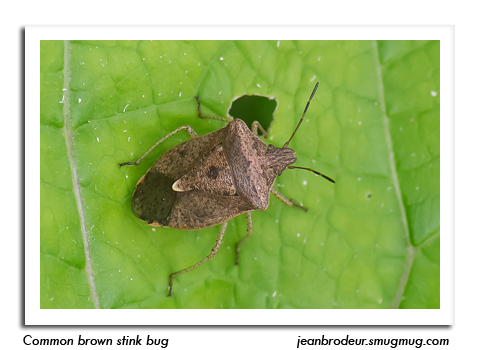
 |
|
|
Looking Ahead
Volume 62 Number 14 Date 08/03/2017 CORN ROOTWORM - The annual beetle survey is underway. Counts in the southern and central districts were variable this week at 0-2.9 beetles per plant, with a low average of 0.2 per plant and economic counts of 0.75 or more beetles per plant found in only 9% (7 of 78) of cornfields sampled. Based on very preliminary survey results, populations appear to be low for early August. Beetle levels are expected to increase markedly as emergence peaks this month. CORN EARWORM - Significant migration flights have not been documented as of August 3. This week's count of 38 moths at 15 pheromone trap locations is an increase over last week's total of 24 moths, but is still low. Monitoring network participants should continue to scout silking sweet corn and replace lures on a weekly basis. EUROPEAN CORN BORER - Moth collections have increased at the Dodge, Fond du Lac and Rock County black light trap locations. The degree day model for this pest suggests that summer flight will peak next week throughout southern and central Wisconsin. Susceptible corn should be inspected for egg masses and larvae before 2,100 degree days (modified base 50°F) have been surpassed and the treatment window for second-generation corn borers closes. WESTERN BEAN CUTWORM - Contrary to last week's forecast, the annual flight had not peaked, but instead accelerated sharply from July 27-August 2 in central Wisconsin. Pheromone traps captured the season's highest weekly total of 747 moths, an increase from 477 moths the week before. The 2017 cumulative count of 1,677 moths in 70 traps has now exceeded last year's total capture of 1,530 moths in 75 traps. Black light and pheromone trap counts should begin to decrease across the southern two-thirds of state where the western bean cutworm degree day model estimates that 75% or more of the moth population has emerged. JAPANESE BEETLE - Damage has intensified in field, fruit, nursery and vegetable crops. A nursery manager in La Crosse County reports that numerous linden and cherry trees have been severely defoliated and the beetles are still extremely abundant. As an indicator of the prevalence of this insect in field crops this summer, beetles have been observed in about 82% of the soybean fields sampled from July 12-August 2 and in 45% of cornfields surveyed in the past week. Defoliation rates have surpassed the 20% economic threshold for reproductive soybeans at a few sites, and moderate to severe silk clipping is common in the edge rows of corn. BROWN MARMORATED STINK BUG - Nymphs were observed by a DATCP field specialist on July 27 near Green Bay, in a raspberry planting. This invasive insect has previously been confirmed as occurring in Brown County and in parts of the east-central region, though it has never been found or reported in a fruit crop in that area of the state. The appearance of juvenile stink bugs is evidence of established, reproducing populations in Brown County and suggests that eastern Wisconsin fruit growers should increase scouting for BMSB this month. -- Krista Hamilton, DATCP Entomologist 





|
|
|